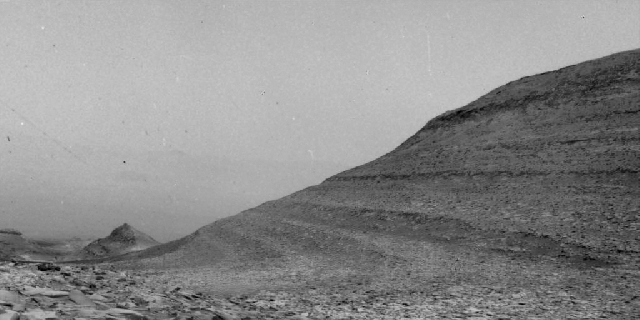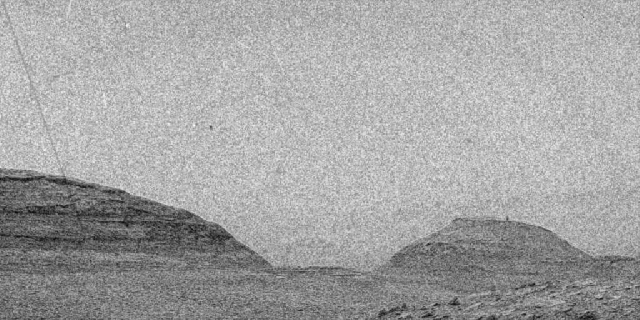
The Sun soaked Mars with high radiation last month, which gave way to exciting camera footage. And, perhaps less thrillingly, it also spotlighted one major obstacle for astronauts.
The imagery looks like snow fell on Mars. NASA’s Curiosity rover captured the eerie scene. There were so many charged particles that reached the Martian barren, jagged surface that the sky view filled with streaks and specks, and the solar spray fell upon the cameras.
“If astronauts had been standing next to NASA’s Curiosity Mars rover at the time, they would have received a radiation dose of 8,100 micrograys — equivalent to 30 chest X-rays. While not deadly, it was the biggest surge measured by Curiosity’s Radiation Assessment Detector, or RAD, since the rover landed 12 years ago,” NASA officials wrote in a Monday announcement.

A solar eruption
The Sun released a solar flare of X-class, a category that represents the most powerful solar eruptions. The Sun has entered the most active phase of its 11-year cycle, which peaks next summer and the Solar System is now at its mercy.
On Earth, humans count on significant protection from the magnetosphere. Earth’s core boasts a liquid outer core. It triggers a magnetic field that essentially cocoons life on the planet’s surface from the worst. But Mars lacks this resource. During the May 20 event, a cluster of X-rays, gamma rays, and charged particles struck the Martian surface.
A danger to astronauts
NASA is in the midst of preparing its Artemis II mission, the second in a series of spaceflights to return humans to the Moon. Then, perhaps Mars.
But before putting astronauts on Mars, NASA must find a way to mitigate their astronauts’ exposure to elevated doses of radiation. Mars would leave astronauts vulnerable to solar radiation and other cosmic radiation since it lacks a thick atmosphere. The planet also doesn’t have a magnetosphere for a shield like Earth does.
According to Don Hassler, the principal investigator of Curiosity’s Radiation Assessment Detector (RAD) instrument, astronauts might seek refuge from such events by the side of a cliff, or inside empty lava tubes.
Curiosity wasn’t the only robot that braced through the solar storm. Odyssey, a NASA Mars orbiter with 20 years of experience under its belt, suffered a short blackout on its star camera because of the event. NASA’s MAVEN orbiter fared better. It got a front-row seat to a global bath of auroras.







